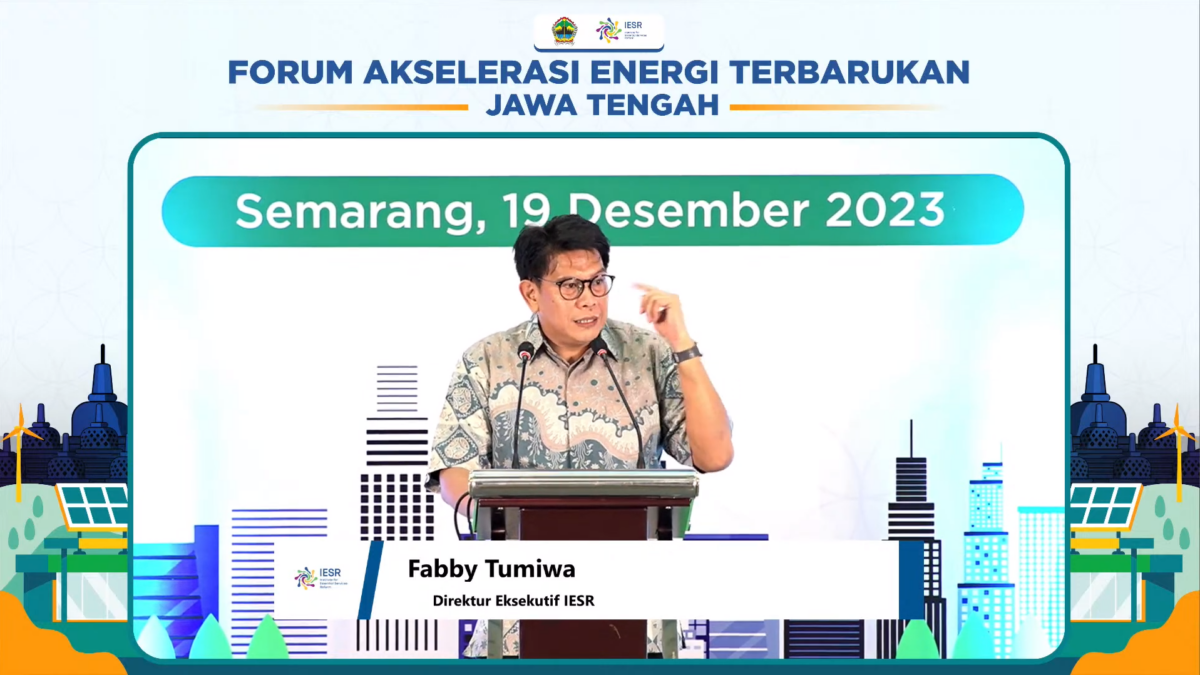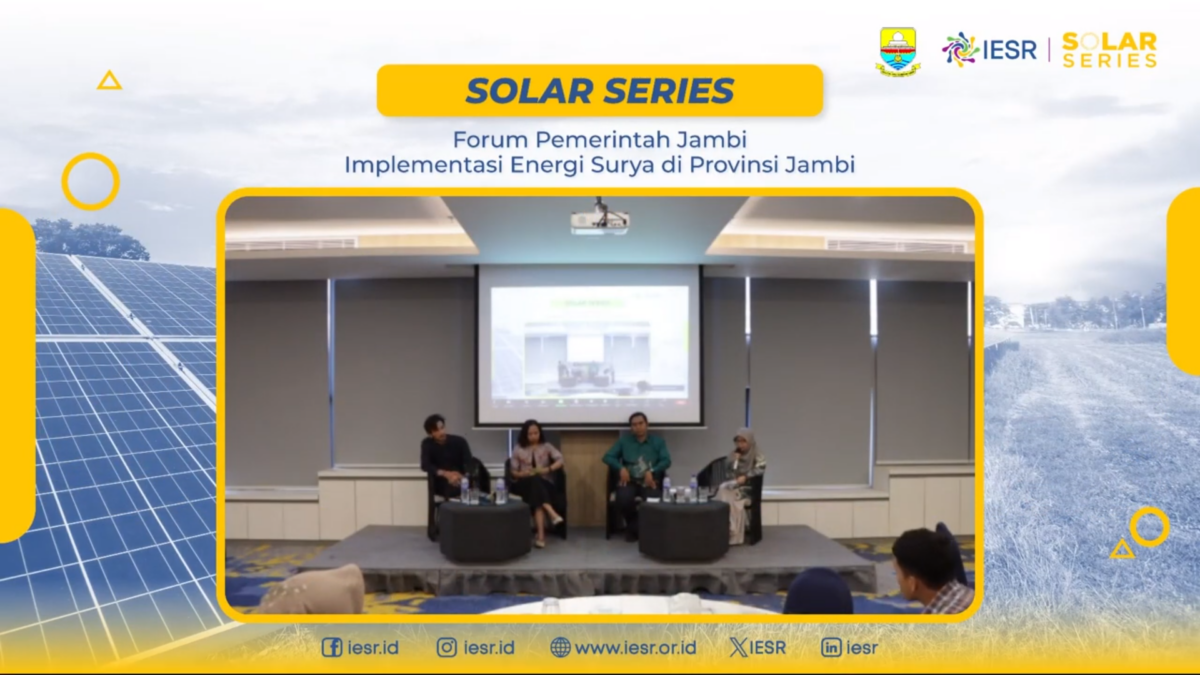The development of New Renewable Energy (NRE) this year is considered difficult to achieve the target.
Read more on Kontan.
Executive Director of the Institute for Essential Services Reform (IESR) Fabby Tumiwa highlighted the rooftop solar PV cluster quota that was recently agreed by PT Perusahaan Listrik Negara (Persero) or PLN with the Ministry of Energy and Mineral Resources (ESDM).
Read more on Bisnis.com.

Palembang, 26 February 2024 - Energy is a basic need for individuals and communities with various purposes. Even though energy is something crucial in human life, not many people know or are critical of the energy sources (such as electricity) that they use every day.
On a larger scale such as the industrial sector, energy…

Jakarta, March 8, 2024 - The Renewable Energy Movement's Civil Society Coalition is questioning the government's commitment to the energy transition. They consider some regulations to be disincentives for switching to renewable energy. These regulations include the Energy and Mineral Resources (ESDM) Ministerial Regulation on solar PV, the Presidential Regulation (Perpres) on carbon capture and…
The government has just issued Minister of Energy and Mineral Resources Regulation Number 2 of 2024 which regulates rooftop solar power plants. Secretary General of the Ministry of Energy and Mineral Resources, Dadan Kusdiana, admitted that household consumers will find it difficult to adopt rooftop PTS after the new regulation is issued.
Read more on Kata…
The new regulation on rooftop solar power plants (PLTS) that has just been issued by the Minister of Energy and Mineral Resources (ESDM) is considered to hamper the growth of household sector customers.
Read more on Kontan.

Jakarta, February 23, 2024 - The Indonesian government has officially issued Minister of Energy and Mineral Resources (MEMR) Regulation No. 2 of 2024 concerning Rooftop Solar Power Plants Connected to the Electricity Network of Holders of Electricity Supply Business License for Public Interest, which is a revision of MEMR Regulation No. 26 of 2021.
In…
Executive Director of the Institute for Essential Services Reform (IESR), Fabby Tumiwa, believes that the revision of the rooftop solar power plant regulation is still not ideal. The new rules have the potential to hamper the growth of rooftop solar power plants and the new renewable energy mix.
Read more on Kata Data.
The installation of solar power plants should not be complicated by regulations. This is because the potential for solar energy in Indonesia is very abundant and can contribute significantly to pursuing the government's target of aiming for 23 percent of the renewable energy mix by 2025.
Read more on Kompas.com.

Cirebon, 26 January 2024 - On the fourth day, the West Java Energy Exploration team continued their journey to Cirebon. Precisely in South Kesunean, Kasepuhan Village, Lemahwungkuk District. There, the group moved towards the shoreline to plant mangroves. South Kesunean has one problem, namely the emerging soil phenomenon. This raised land appears due to the…

Semarang, 19 December 2023 - The annual Climate Summit (Summit) held in Dubai in November - December 2023 resulted in a number of global agreements, one of which was an agreement by 118 countries to transition and abandon fossil fuels. This agreement was born partly due to pressure from countries experiencing the impacts of climate…

Jambi, 28 November 2023 - In the General National Energy Plan (RUEN) document, Indonesia targets 23% renewable energy mix by 2025. Until 2023, Indonesia has only achieved 12.5% renewable energy in its energy mix. In the Jambi Government Forum organized by the Institute for Essential Services Reform (IESR) in collaboration with the Jambi Province Energy…
